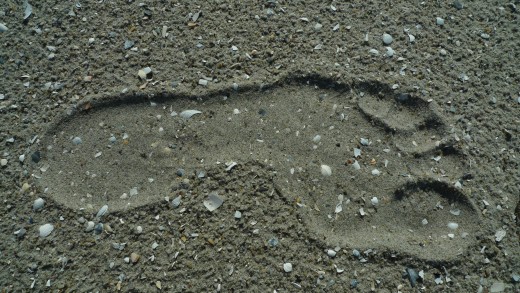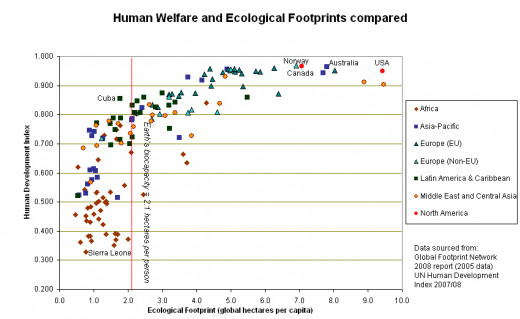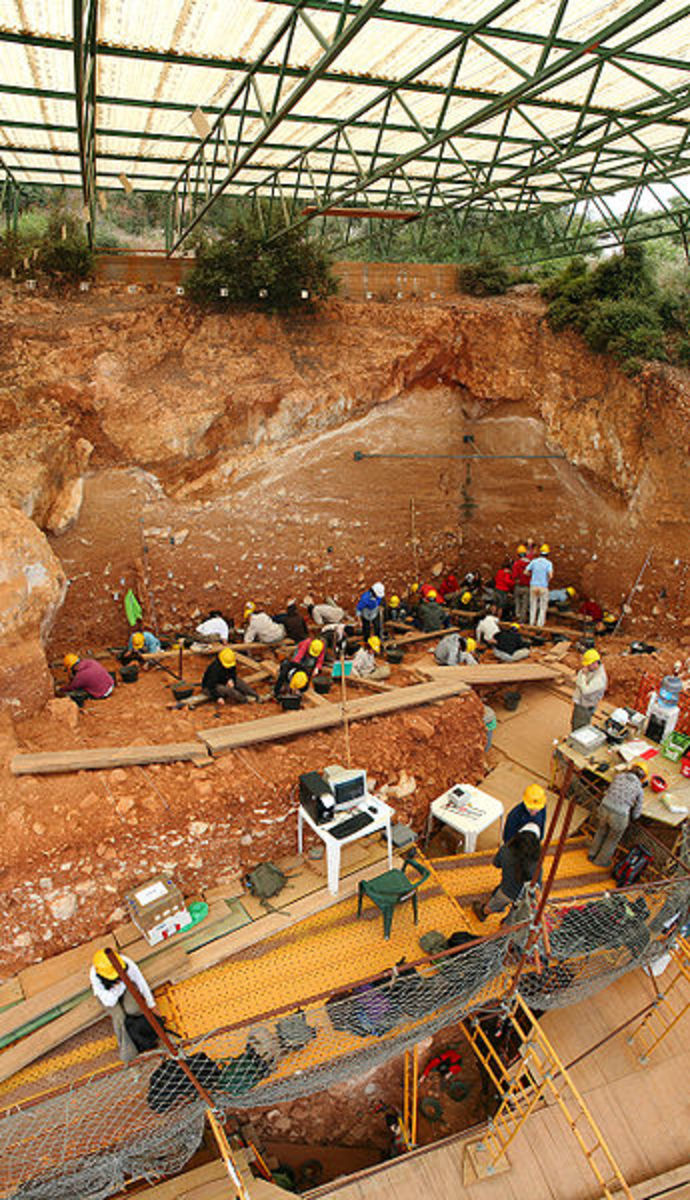How Is Your Carbon Footprint Measured?

Responsibility
I Feel Responsible For Reducing My Footprint
About Carbon Footprint
There are two kinds of footprints in use - Carbon footprint and Ecological footprint. The Ecological footprint is the most complete, because it also contains the Carbon footprint.
In this article the same family composition are examined on ten different websites, including the ones of reputable organizations, like WWF and Center for Sustainable Economy (CSE). Organizations that derive their existence mainly from donations and sponsors.
What is the Ecological Footprint?
- According to the Oxford Dictionaries the definition of Ecological Footprint is: The impact of a person or community on the environment, expressed as the amount of land required to sustain their use of natural resources. According to several sources including Wikipedia, it is a standardized measure of demand for natural capital.
- According to the Stockholm Environment Institute, the definition of Ecological Footprint is: The ecological footprint is defined as consumption (measured in, for example, kg) times production efficiency (hectares/kg).
Interesting in the latter case, that looks very officially, is that we have only influence on the consumption part and not on the production part.
The reputable institute ImechE published a report that contains staggering figures about how inefficient the food production appears to be. Between 30 to 50% of all produced food in the world doesn't even make it to the supermarket. The inevitable conclusion is that if you consume only supermarket food, the footprint calculators hold you responsible for maintaining this inefficient food chain. Do you agree or disagree with this, once you're aware of this?

How To Reduce Your Footprint
Eating no meat and no fish, and growing your own crop reduces the footprint radically, with more than 30%. This result appears to be the common denominator of Footprint Calculators.
Other major steps are:
- replacing traditional light bulbs for LED lights
- isolating your home
- taking the train or bus instead of the airplane or car
Criticism How Current Footprints Are Measured
There is also criticism on the way how the Ecological Footprint is measured. Here are a few passages from a report published by the Institute for Environmental Studies, that contains a summary of other researches on this issue:
- "The most fundamental issues in the critique on EF is on measurement: van Kooten and Bulte (2000) object strongly against EF because it is not clear what is being measured, and how resources and waste are being converted. The first problem is rather devastating: it is not well defined what is ‘nature’ in the definition of ‘How much nature people use to sustain themselves’. Moreover, they state that it is not clear what is meant with the finding that EF > carrying capacity. Is this necessarily bad? Van Kooten and Bulte (2000) conclude that EF is only a convenient means of organizing globally available data on population, income, resource use and resource availability into a single metric. Secondly, EF claims that resources and waste flows are converted into productive land. However, little is known about what happens to wastes when they enter ecosystems, and even less is known about how toconvert resource and waste flows into a productive land area".
- "Van den Bergh and Verbruggen (1999) formulate additional critique on the underpinning of the footprint. First of all they criticize the hypothetical nature of the metric. That is a great danger in that it will be interpreted as actual land or at least realistic land use. They call it false concreteness. Moreover, there is no distinction between sustainable and unsustainable land use. That implies that it is not possible to allow for a trade−off between environmental sustainability and intensive/extensive land use, notably in agriculture. Neglecting multiple land use will bias EF. Secondly, for most developed countries 50% of EF estimates relate to land area needed to catch CO2 emissions. According to van den Bergh and Verbruggen (1999) this is questionable: CO2 assimilation by forests is one of many options. Thirdly, EF calculations per country are rather arbitrarily from an environmental perspective. It would be more consistent to use environmental boundaries in stead of state boundaries. But apart from this accounting point of view a fundamental issue is that it is not clear whether it is a bad thing if a region or a country faces a high EF. Van den Bergh and Verbruggen (1999) note that in comparing the per capita EF among regions its value appears to be a reflection of the global distribution of wealth. But the spatial concentration of people has a positive impact on sustainability".
It looks like all the organizations that are busy with Ecological Footprints have good intentions to make the general public more aware of their impact on the natural resources and their own surrounding, but it looks that there could be some ambiguities lurking beneath the surface.
It is time for a Comparative Market Survey!
A Simple Household with a Simple Healthy Life
Subject
| Details
|
|---|---|
Household
| 2 persons
|
Home
| Small Apartment, 50-100 m2, isolated with double glass.
|
Diet
| Vegetarians, fish once a week
|
Usage of Organic Food
| Often, mostly locally produced
|
Transport
| Mainly walk and bicycle. Usage of a car a few times per month < 100 km. Rarely travelling by train or bus. No transport by Airplane.
|
Pet
| One cat
|
Recycling
| Paper, plastic, glass
|
Spending behaviour
| Low profile
|
Energy saving equipment
| All equipment and lights
|
Heating system
| Common gas boiler
|
The Results of 10 Websites
Ecological Footprint Comparison
| amount of questions
| Result in Globes
| Result in Hectare
|
|---|---|---|---|
WWF (Dutch Version)
| 24
| 1,6
| 2,8
|
WWF (Belgian Version)
| 10
| -
| 3,4
|
Ecolife.be
| 11
| -
| 3,2
|
Duurzaamheidinactie.nl (Global Footprint Network)
| 26
| -
| 2
|
Myfootprint.org
| 27
| 1,24
| 19,6
|
footprintnetwork.org
| 23
| 4,1
| 8,3
|
footprint-calculator.islandwood.org
| 10
| 0,48
| -
|
powerhousemuseum.com
| 15
| -
| 6
|
bioregional.com (long version)
| 57
| 1,6
| 3
|
ecologyfund.com
| 13
| 1,4
| 1,8
|
The Results: Large Variations
After performing ten different Ecological Footprint tests I have no idea what the footprint of this situation might be.
The variation is between 0,48 up to 4,1 globes and between 1,8 up to 19,6 hectare per person. This variation in results show that calculating a footprint is a highly precarious thing.
The situation of this couple is very simple, it looks like there are not so much more steps they can take in saving the environment. These people don't own a car, never travel by plain and hardly travel by bus or train, don't eat meat, rarely fish, live in a small flat, buy mainly locally grown food. What should they do less?
It seems that Van Kooten and Bulte and Van den Bergh and Verbruggen are both right - this method of measuring doesn't appear to be suitable for determining a footprint. It is a hoax.
The Best Website: Islandwood
There is only one result, among the ten results, that comes closest in representing the actual situation - the one of Islandwood. Islandwood seems to be the only organisation that understands how a correct footprint must to be calculated, while their calculator is amazingly simple. An amazing good job!
About the other Footprint websites:
Eyecatching are the different translations between the calculated amount of required Planets and required Hectares. This is strange, because this shouldn't be so difficult.
- Earth consists of approximately 145 million km2 land surface.
- from which approximately 50% is habitable, including agricultural land, the rest are deserts and mountains which should not be included.
- this makes with 7 billion people, 1 hectare per person available.
- if according to WWF 2,8 hectares are required this would represent 2,8 planets instead of 1,6.
- if according to Myfootprint 19,6 hectares are required, this would represent 19,6 planets instead of 1,24.
It has the appearance that most organisations, including WWF and Myfootprint, are thriving by the grace of deception. This deception causes a large misunderstanding among the general public. This deception is the bases of their income.
The philosophy of Islandwood seems to be the only organisation among the ten that understands how to make the general public aware, without deceiving them.
© 2014 by Buildreps





